Purchase management is critical to keeping an organization well-supplied. From purchase orders to inventory management, there needs to be a process to keep teams equipped with necessary supplies.
How do you manage the purchase order processing? Let’s take a look at the ins and outs of a procurement department and some best practices to follow when purchasing inventory.
What Is Purchase Management?
Purchase management is the process of procuring items from external suppliers. It’s the management of purchasing, receiving, reviewing and approving purchase orders. Purchase management also includes managing the relationship with the supplier.
The relationship part of purchase management is one of the most important aspects of the process. While every step in the purchase process is important, without a good working relationship, issues will arise. The better the relationship between the company and the vendor, the smoother purchasing will be.
One must look at purchase management as more than just buying goods and services. The purchase process has included researching materials and sources, making sure deliverables are on time, inspecting them for quality, and thorough inventory management and accounting.
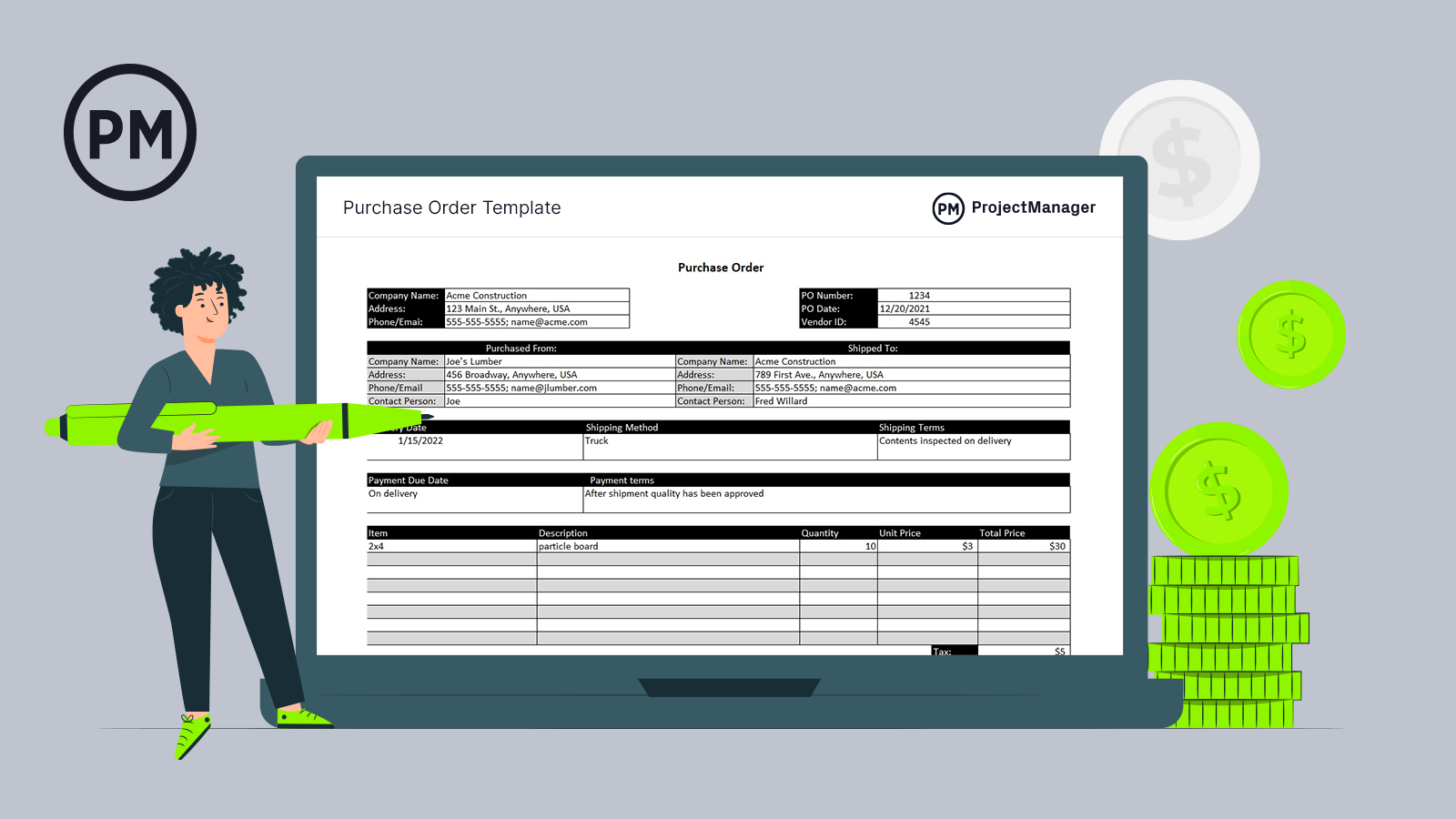
Get your free
Purchase Order Template
Use this free Purchase Order Template for Excel to manage your projects better.
Benefits of Purchase Management
Money is the bottom line, and not paying attention to these aspects of purchase management will negatively impact a business’ bottom line. Purchase management will help you with procurement management by compiling documentation to show that your profits are higher than what you’re spending.
- Lower Costs: Lower costs are the biggest benefit a company can reap from purchase management. This includes running your procurement department more efficiently by getting the best prices and terms. The purchasing department can also take advantage of warranties and discounts that could otherwise fall through the cracks.
- Reduced Risk: Purchase management can reduce risk and keep your supply chain secure. Risks are shared with suppliers, and you could potentially move risks to suppliers who can handle them. The purchase department can also identify key supplies and ensure the supply chain is secure.
- Software: Technology can further add to your purchase management by using software that identifies supply chain problems and adds efficiencies.
- Supply Chain Management: The supply chain is the flow of goods and services. Supply chain management helps companies streamline their supply-side activities to help give customers the most value. This lets them gain a competitive advantage in the marketplace, which leads to a more viable business.
- Inventory Management: Inventory management is about controlling and overseeing a business’ purchases. Purchase management helps you customize approvals to improve inventory stock by streamlining inventory control processes. This leads to greater efficiency and lower costs. Our inventory management template is ideal to keep track of your purchases.
- Supplier Relationship Management (SRM): Relationships are key to purchase management. It’s a way to find benefits for both the company and suppliers. When suppliers work with businesses and invest in long-term relationships, both come out winners. Therefore, managing these relationships is critical. Purchase management systems improve supplier relationships by tracking and connecting your company to real-time inventory stock data.
- Quality Management: Quality also benefits by setting target performance levels for quality and tracking them to make sure they’re being met. Metrics such as durability and timeliness of delivery can improve the overall quality of the products.
ProjectManager is online work management software that allows you to manage your purchases in multiple views like boards, lists and Gantt charts, and it tracks your purchases in real time. A live dashboard captures several metrics such as time and costs and automatically calculates the data to help you monitor your procurement. Try ProjectManager today!
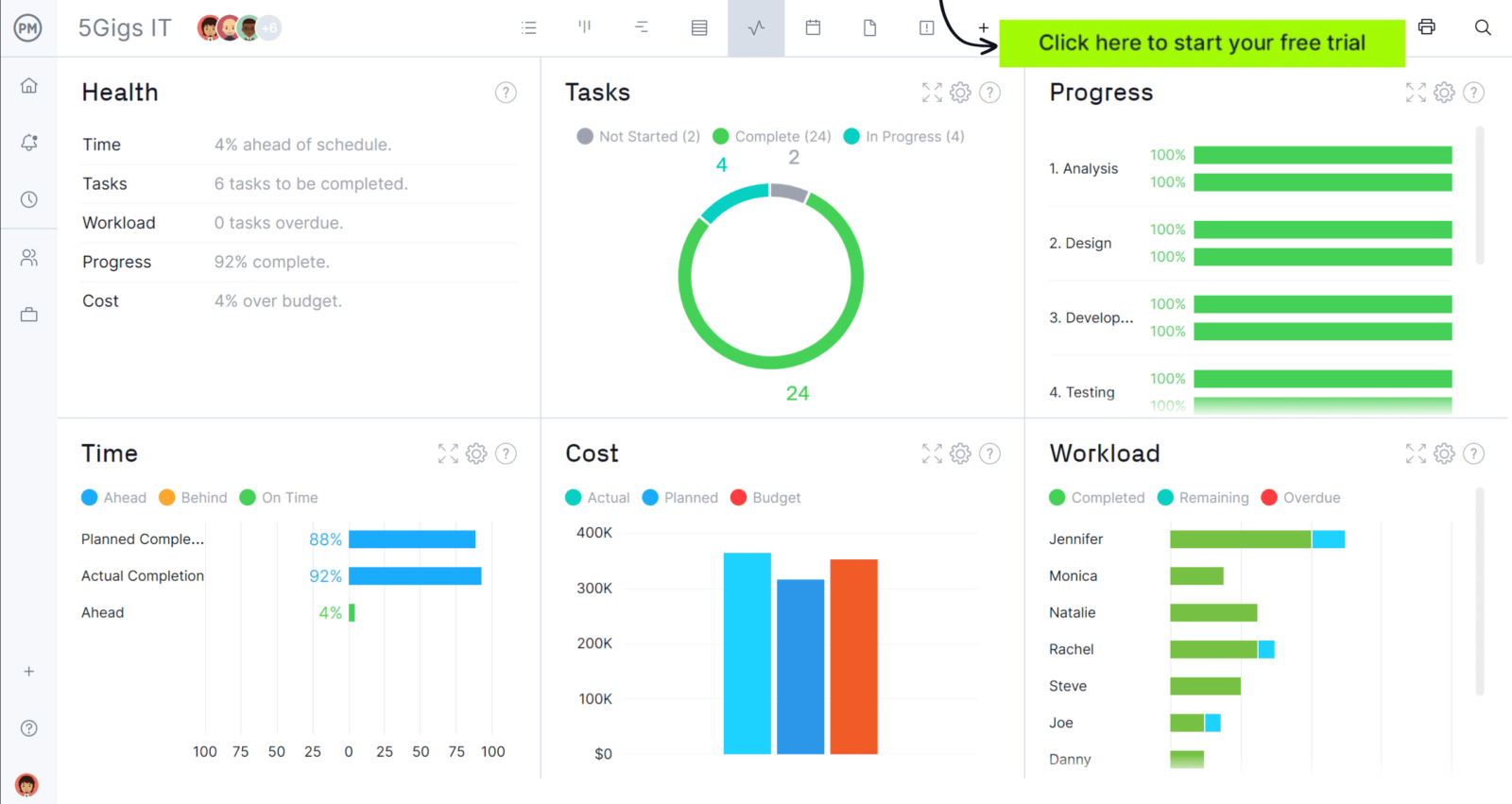
Purchasing Cycle Steps
Throughout the purchasing cycle, businesses will make requirement determinations, research suppliers, make value analyses, have a review process, monitor and evaluate the order and more.
The seven steps to the purchasing process include the following.
1. Create a Purchase Requisition
The purchase requisition is an internal document used to purchase goods or services. The purchase requisition can be for business operations or manufacturing. The purchase requisition includes the name and department of the person requesting the goods or services, date of the request, products or services requested, item description, quantity and price.
2. Budget Approval
The budget is the allotted money used to purchase goods or services. The budget makes sure that there is enough money earmarked for the item. When a budget for the purchase has been figured out, it must be submitted to managers with the authority to approve the purchase.
3. Create an RFP
The request for proposal describes the work and solicits bids from suppliers for goods or services related to the proposal. Not all purchase management processes include an RFP, but they’re a good way to standardize the relationship with suppliers and get the best price for the highest quality.
4. Supplier Selection
After you get back the RFPs, you’ll need to select a supplier. Having a supplier selection scorecard can help you whittle down your choices by detailing the characteristics, strategic alignment, business policies and any constraints that you will or won’t work with. Once you have a suitable supplier that answers your RFP with cost, time and quality that meets your criteria, you can negotiate, which will lead to the next step.
5. Create a Purchase Order
Once you have a supplier who agrees to your terms, it’s time to create a purchase order (PO). The purchase order is a binding document from the buyer to the seller. The difference between a purchase order and a purchase requisition is that the latter is a contract. The company is committing to making a purchase from the supplier as outlined in the purchase order. The company creates the PO before before the purchase, lays out what’s needed and includes proposed payment details.
Purchase Order Template
This free purchase order template is the ideal tool to streamline and standardize the purchase management process. It allows you to reach an agreement with suppliers of goods such as raw materials, parts and components that your organization needs to manufacture products or make project deliverables.
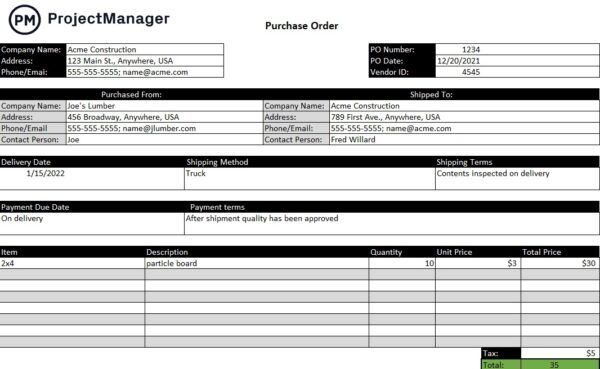
6. Invoice Approval
After you’ve verified the purchase order to make sure it matches your RFP and any other purchase-related documents, such as purchase requests, receipts, etc., and define any exceptions to make sure no vital information is missing, you can bring the purchase order to manage to get any necessary approvals.
7. Contract Approval
A contract with a vendor can be long-term or for a set number of supplies. Either way, you must review the contract and ensure all parties are in agreement with the terms. It’s best to have a standardized contract to streamline this process. Before approving, review carefully, as once signed this is a legally binding document.
Purchasing Strategies and Best Practices
Having a purchasing strategy helps you make more effective purchasing decisions and deliver quality goods on time with mutually agreeable terms. There are several purchasing strategies companies can employ to get these benefits.
One is single-source procurement, which is when a company takes on only one source for procurement. This requires a vendor with excellent service who is dedicated to the relationship. Mostly, you’ll find this sort of strategy when purchasing office supplies.
A purchasing cycle is when a company orders from a group of regular vendors, but outsources larger ad-hoc purchases. Procurement auctions are used in short-term projects to get the best price. However, you deal with suppliers, several core strategies apply to all best practices procurement.
Finally, you can work with suppliers that give you the best terms and pricing and build a strong relationship. Total quality methods (TQM) require that the vendors provide increasingly better quality. But no matter which you choose, a risk management program should be applied when dealing with any supply chain.
How ProjectManager Helps with Purchase Management
ProjectManager is software that helps streamline work management processes while connecting hybrid teams no matter where they’re located or the skill level they have. Buyers can monitor their inventory and connect with vendors in the tool to share purchase and invoice documents. Notifications can be set up to keep everyone updated to avoid costly delays.
Get Transparency in Production with Kanban Boards
Get transparency into your manufacturing to make sure your teams have all the resources they need to keep working at capacity with kanban boards. This visual workflow tool allows managers visibility into the manufacturing process so they can see when inventory is low and request more supplies from their vendors.

Generate Reports in Seconds
For a deeper dive into the process, there’s one-click reporting. Get reports on timesheets, status, time, cost and much more. These reports can be shared with vendors to keep them in the loop and build better relationships. All reports can be filtered to focus on only the data you want to track.
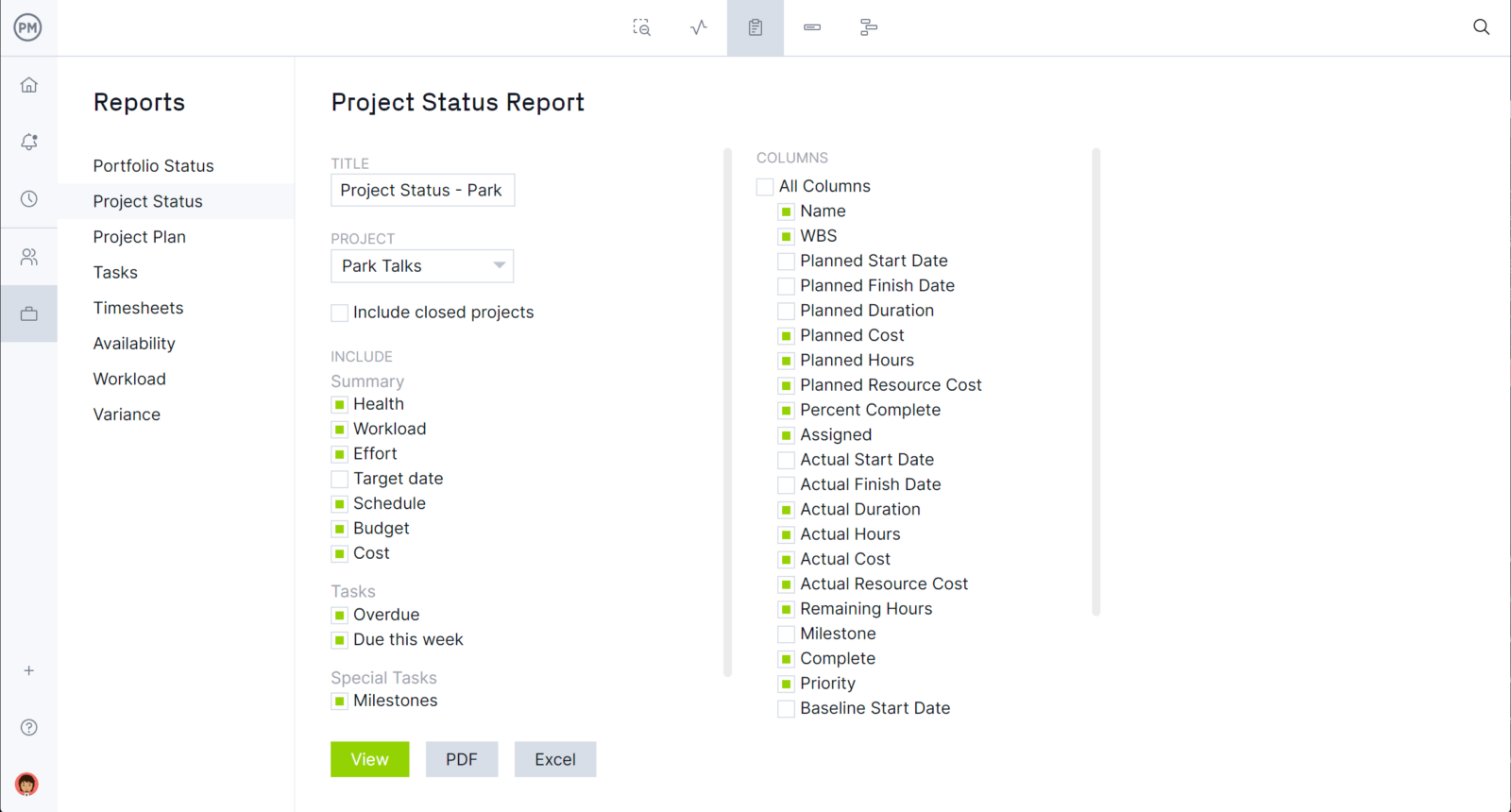
Store Unlimited Files in One Place
ProjectManager has unlimited file storage that can be a central hub for all your purchasing documents. Security can be set to allow vendors access to only those parts of the software that are critical to their job, while the rest of your sensitive data is protected and secure.
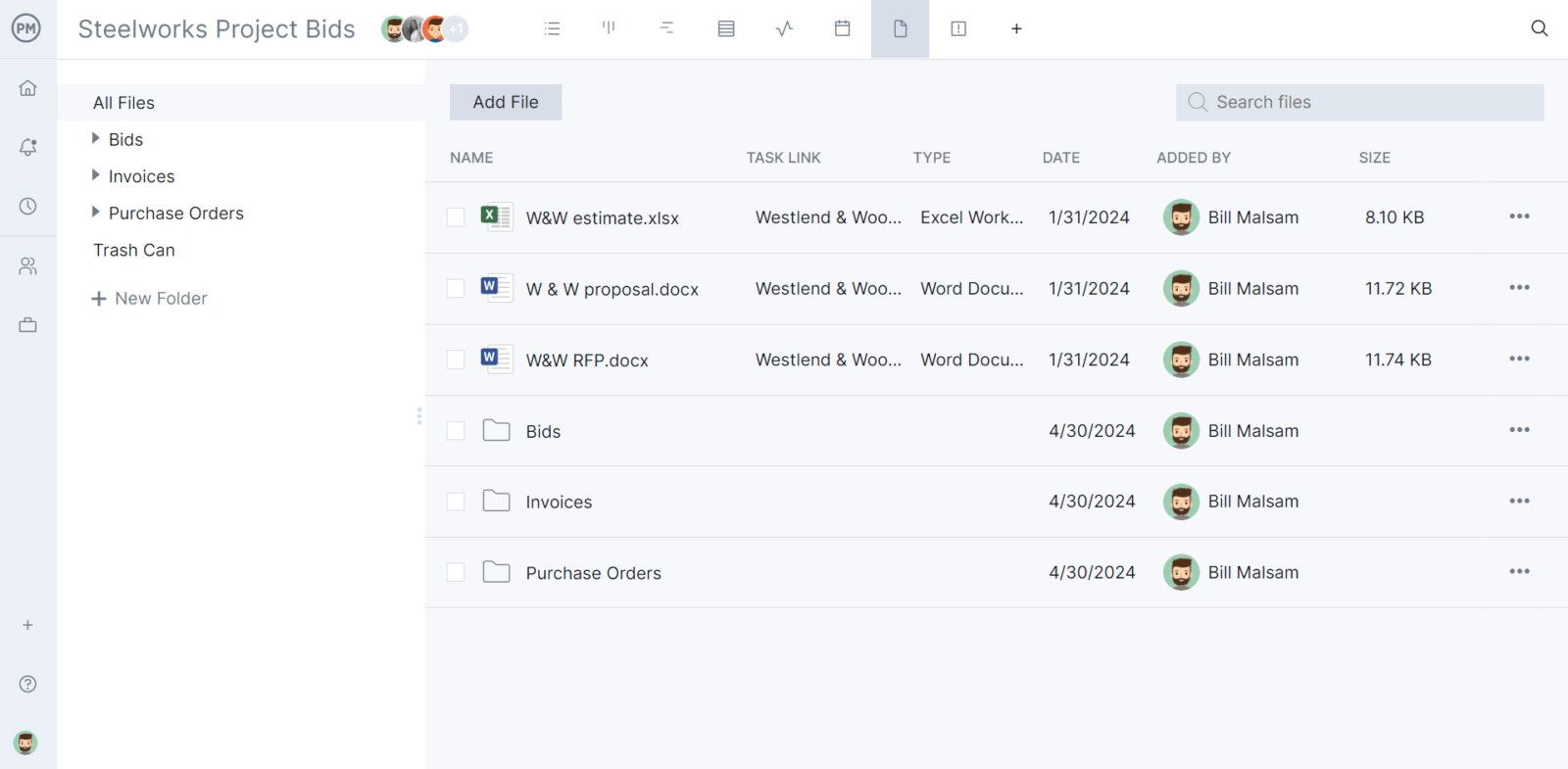
ProjectManager is award-winning software that streamlines the purchasing for manufacturers and any company that works with outside vendors. Organize your work, connect teams and create one source of truth to make sure everyone is always working on the most updated information. Try ProjectManager today for free!

